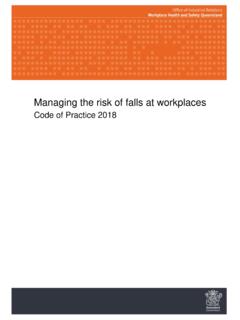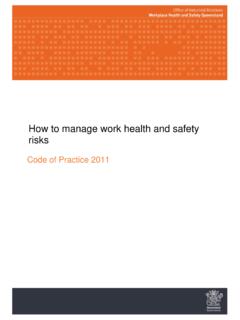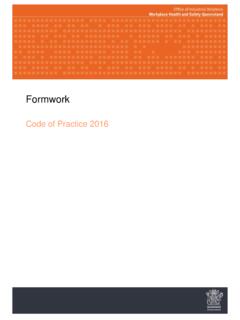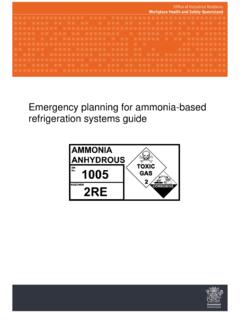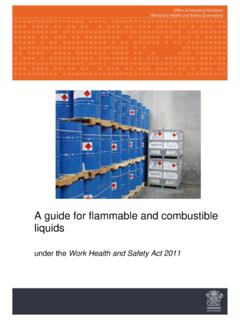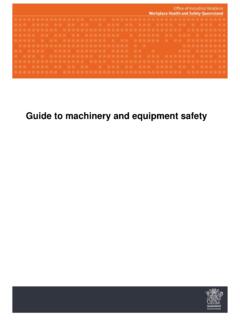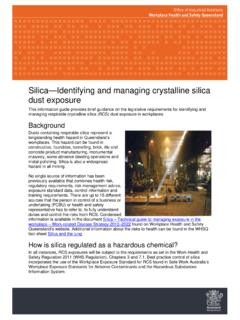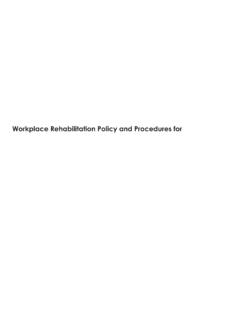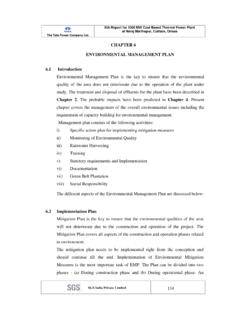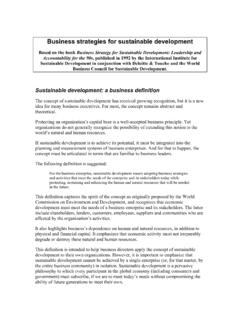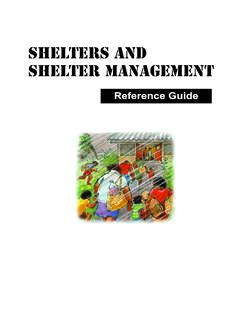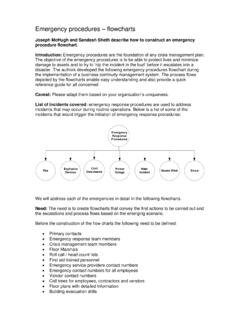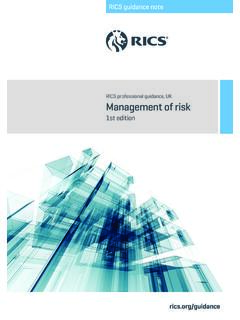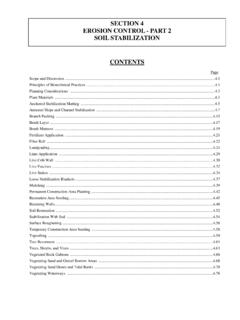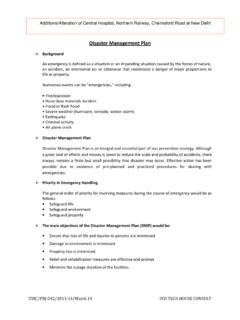Transcription of Traffic management for construction or maintenance work ...
1 Traffic management for construction or maintenance work Code of Practice 2008 Traffic management for construction or maintenance work - Code of Practice 2008 (PN11191) Page 2 of 28 This Queensland code of practice was preserved as a code of practice under section 284 of the Work Health and Safety Act 2011. This code was varied by the Minister for Education and Industrial Relations on 27 November 2011 and published in the Queensland Government Gazette on 2 December 2011. This preserved code commenced on 1 January 2012. This code was varied by the Minister for Education and Industrial Relations on 1 July 2018.
2 Traffic management for construction or maintenance work - Code of Practice 2008 (PN11191) Page 3 of 28 Contents 1. Introduction .. 5 Purpose .. 6 What is this code of practice about? .. 6 Scope of application .. 6 Legislation .. 7 2. construction and maintenance work .. 7 Introduction .. 7 Principal contractors for construction projects .. 8 PCBUs for construction work .. 8 PCBUs for maintenance work .. 8 Workers and other persons .. 8 3. Risk management .. 9 Introduction .. 9 Risk management .. 9 4. Traffic management .. 9 Introduction .. 9 Manual of Uniform Traffic Control Devices Part 3 (MUTCD Part 3).
3 10 Responsibilities .. 10 Planning .. 10 Traffic plans .. 11 Traffic demand .. 11 Traffic routing .. 11 Traffic control .. 12 Other road users .. 12 Special vehicle requirements .. 12 5. Roles and responsibilities of Traffic controllers and associated persons 12 Function of a Traffic controller .. 12 Responsibilities of a Traffic controller .. 12 Responsibilities of PCBUs who employ Traffic controllers .. 13 Responsibilities of approved Traffic controller training providers .. 14 6. Training and accreditation .. 14 Introduction .. 14 General construction safety induction training.
4 14 Level of MUTCD Part 3 training .. 14 7. Record keeping .. 15 Records .. 15 Daily routine tasks .. 15 General .. 15 Before work starts .. 15 During work hours .. 15 Closing down at the end of the day .. 16 After hours .. 16 8. General hazards and risks .. 16 Introduction .. 16 Working in low light or at night time .. 16 Sun and heat .. 17 Traffic management for construction or maintenance work - Code of Practice 2008 (PN11191) Page 4 of 28 Fatigue .. 17 Slips, trips and falls .. 18 Noise .. 19 Recycled water .. 19 Inclement weather .. 20 Hazardous manual tasks.
5 20 Appendix 1: Dictionary .. 22 Appendix 2: Sample safe work method statement .. 24 Appendix 3: Example of a road signing checklist .. 27 Appendix 4: Standards .. 28 Traffic management for construction or maintenance work - Code of Practice 2008 (PN11191) Page 5 of 28 1. Introduction The Traffic management for construction or maintenance work Code of Practice is an approved code of practice under section 274 of the Work Health and Safety Act 2011 (the WHS Act). An approved code of practice is a practical guide to achieving the standards of health, safety and welfare required under the WHS Act and the Work Health and Safety Regulation 2011 (the WHS Regulation).
6 From 1 July 2018 duty holders are required to comply either with an approved code of practice under the WHS Act or follow another method, such as a technical or an industry standard, if it provides an equivalent or higher standard of work health and safety to the standard required in the code. A code of practice applies to anyone who has a duty of care in the circumstances described in the code. In most cases, following an approved code of practice would achieve compliance with the health and safety duties in the WHS Act, in relation to the subject matter of the code. Like regulations, codes of practice deal with particular issues and do not cover all hazards or risks which may arise.
7 The health and safety duties require duty holders to consider all risks associated with work, not only those for which regulations and codes of practice exist. Codes of practice are admissible in court proceedings under the WHS Act and WHS Regulation. Courts may regard a code of practice as evidence of what is known about a hazard, risk or control and may rely on the code in determining what is reasonably practicable in the circumstances to which the code relates. An inspector may refer to an approved code of practice when issuing an improvement or prohibition notice. This may include issuing an improvement notice for failure to comply with a code of practice where equivalent or higher standards of work health and safety have not been demonstrated.
8 How the code is organised In providing guidance, the word should is used in this Code to indicate a recommended course of action, while may is used to indicate an optional course of action. This code also includes various references to provisions of the WHS Act and WHS Regulation which set out the legal requirements. These references are not exhaustive. The words must , requires or mandatory indicate that a legal requirement exists and must be complied with. Who has duties? A person conducting a business or undertaking (PCBU) has the primary duty under the WHS Act to ensure, as far as reasonably practicable, that workers and other persons are not exposed to health and safety risks arising from the business or undertaking.
9 Officers, such as company directors, have a duty to exercise due diligence to ensure that the business or undertaking complies with the WHS Act and WHS Regulation. This includes taking reasonable steps to ensure that the business or undertaking has and uses appropriate resources and processes to provide and maintain a safe work environment. Workers have a duty to take reasonable care for their own health and safety and that they do not adversely affect the health and safety of other persons. Workers must comply with any reasonable instruction and cooperate with any reasonable policy or procedure relating to health and safety at the workplace.
10 Traffic management for construction or maintenance work - Code of Practice 2008 (PN11191) Page 6 of 28 Consulting workers Consultation involves sharing of information, giving workers a reasonable opportunity to express views and taking those views into account before making decisions on health and safety matters. The WHS Act requires that you consult, so far as is reasonably practicable, with workers who carry out work for you who are (or are likely to be) directly affected by a work health and safety matter. If the workers are represented by a health and safety representative, the consultation must involve that representative.
